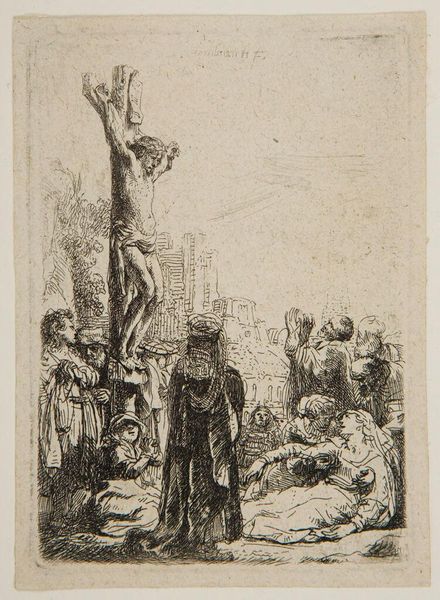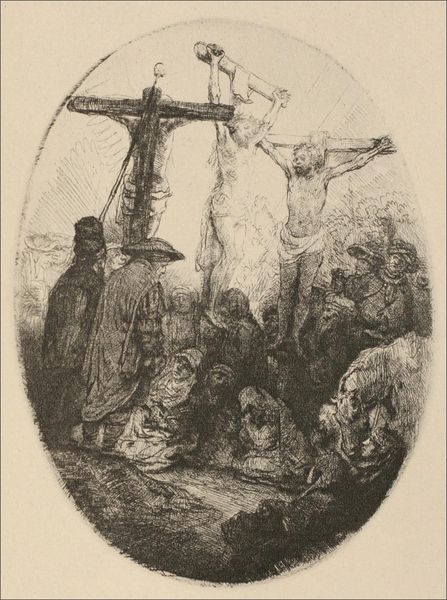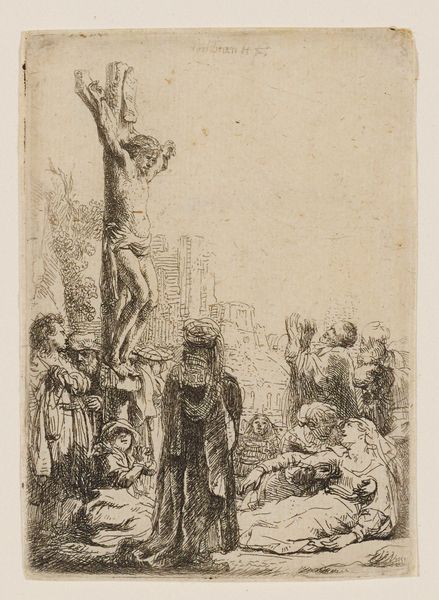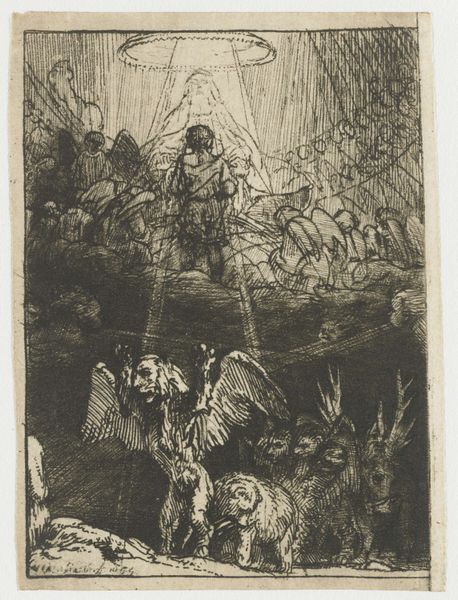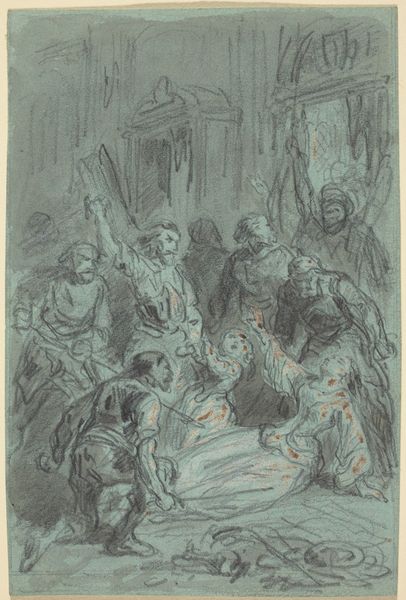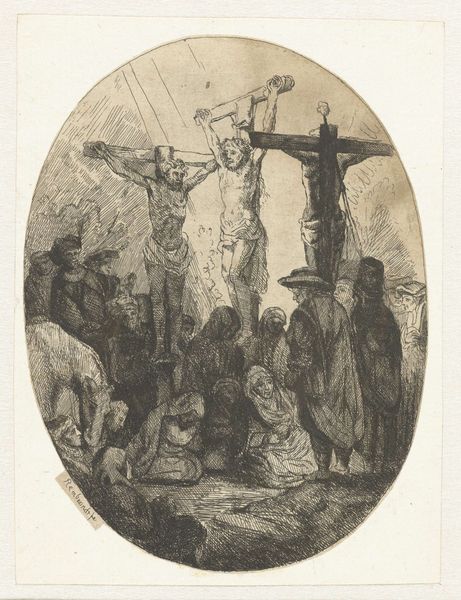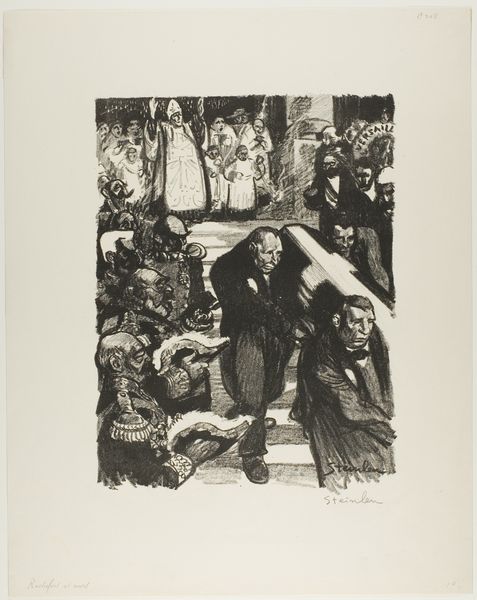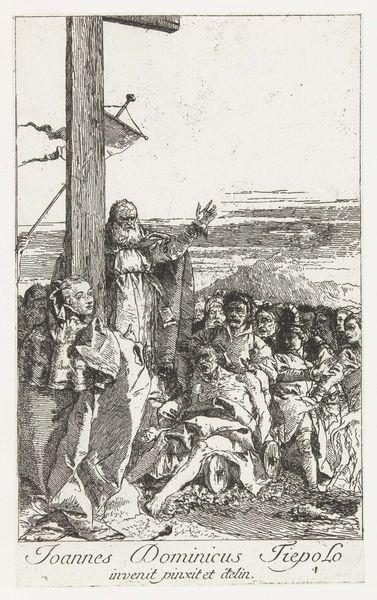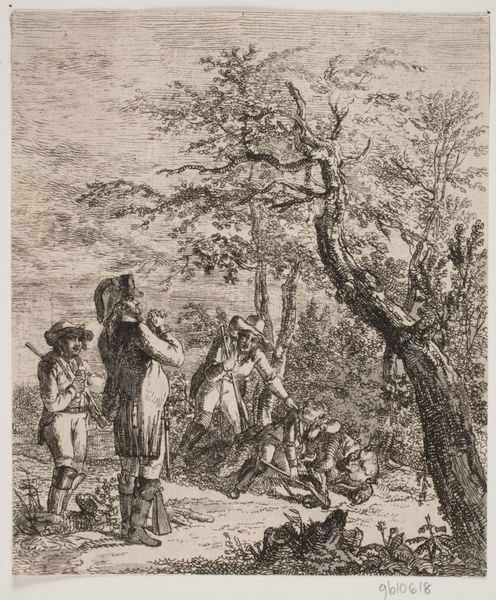
print, etching
#
portrait
#
ink drawing
#
narrative-art
#
baroque
# print
#
etching
#
figuration
#
history-painting
Dimensions: 10 x 7 cm
Copyright: Public domain
Curator: Rembrandt van Rijn's "The Crucifixion a Square Small Plate," dating from 1634, is an etching of considerable dramatic weight, wouldn't you agree? Editor: Yes, the somber atmosphere certainly strikes you first. The cross looms against a muted, perhaps chaotic backdrop and I must say it all seems very immediate and unsettling. Curator: The way he uses etching to suggest light and shadow, to give depth to the print... It speaks to the techniques prevalent during the baroque period, where strong contrasts heightened drama. It is fascinating to think about the use of metal plates and acid in the printmaking process and how accessible prints were to the 17th-century public. What impact this piece may have had considering it’s small size. Editor: Precisely! Notice how the composition focuses attention toward the suffering figure on the cross, made even starker when positioned over a crowd reacting to what is happening; what would be the artist trying to elicit in his public? But from the purely technical perspective, observe the contrast. There's a play between dense areas of intricate line work and sparser, almost skeletal outlines that create depth. The textural variance draws one in and really holds your gaze, doesn't it? Curator: Indeed, but let’s consider also the social factors at work here, what could it mean to represent a religious image during a period marked by religious conflicts, or even about who would commission and own pieces like these? Those fine lines that build the crowd also invite the viewer into a meditation on human suffering and the broader message it sends of social inequality. Editor: That is valid indeed. By bringing such dramatic structure to what one could consider just a historical tableau, Rembrandt turns the scene into a vehicle for universal emotion. I find this particular image truly captures the artist’s sensitivity towards not only composition and rendering but the range of feelings humans can be exposed to. Curator: Absolutely, reflecting on this work through the lens of its socio-economic conditions alongside its inherent technical achievements has been truly enlightening. Editor: I concur, investigating both its formal components and broader significance is the optimal strategy.
Comments
No comments
Be the first to comment and join the conversation on the ultimate creative platform.

